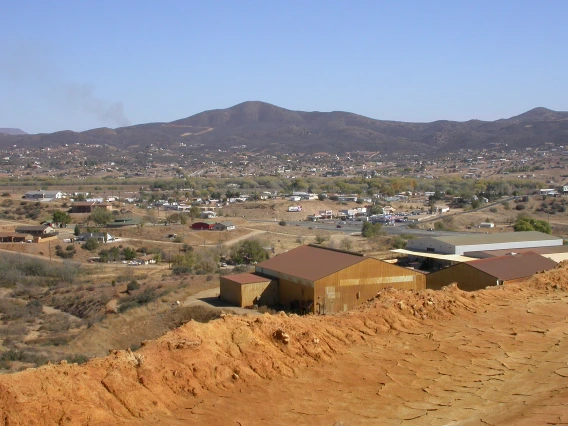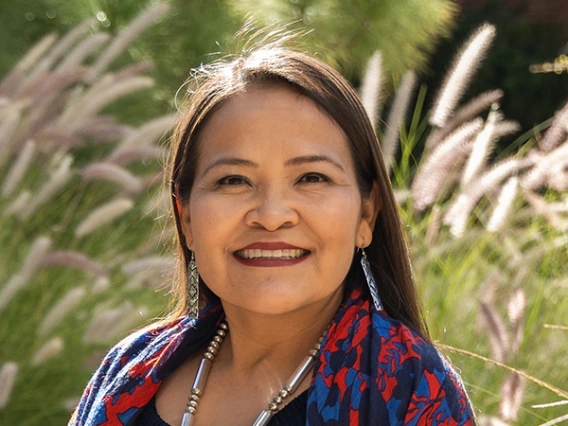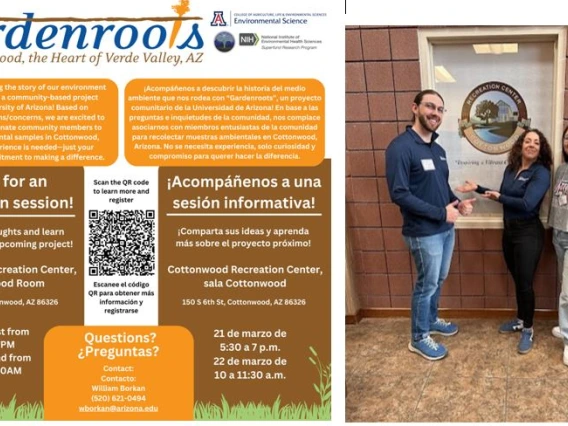The DUST Center: Hazardous Dust in Drylands- Exposure, Health Impacts, and Mitigation
The Superfund Research Center at the University of Arizona uses an interdisciplinary approach to study hazardous waste issues in the U.S. Southwest (including the Arizona-Sonora border and Native Nations). We focus on arsenic and mine tailings. Our biomedical and environmental scientists collaborate to investigate risks, develop remediation strategies, and translate research findings to government stakeholders and the affected community. Our mission is to advance science and to use the research conducted by our program for the improvement of human health and the environment.
Our Research Projects
PROJECT 1 - Effects of Arsenic and Arsenic-containing Mine Tailings Dusts on Airway Epithelium and Susceptibility to Mold Exposure
This research aims to understand how arsenic as well as other metal(loid) affects our lungs and why it makes individuals more vulnerable to other environmental threats, such as mold. By uncovering these mechanisms, we hope to better inform communities of potential risks and develop strategies to safeguard their health.
PROJECT 2 - Induction of Fibrotic Lung Injury by Inhalation Exposure to Arsenic and Arsenic-Containing Mine Tailings
This research will enable the establishment of a mechanistic model of how chronic exposure to dust that is co-contaminated with metal(loid)s and fungal spores contributes to the development of nonmalignant lung diseases and provide pivotal mechanistic data for developing strategies and guidelines for risk detection and disease prevention in communities neighboring mine waste sites.
PROJECT 3: Transformation of Metal(loid)-bearing Particulate Matter and Associated Impacts on Bioaccessibility
This research is designed to establish relations between the detailed physical-chemical properties of particulate matter from mine tailings and the release into lung fluid of the particle-bound metal(loid)s that they contain.
PROJECT 4: Phytoremediation of Metal-Contaminated Mine Sites in Drylands
This research will advance site characterization capabilities and optimize remediation technology to generate lasting vegetation covers that can stabilize mining wastes while recovering metals for reuse and preventing transport of associated contaminants via wind or water into surrounding areas.
Our Research Support Cores
Administrative and Research Translation
The University of Arizona Superfund Research Center (UA SRC) Administrative Core is the "glue" that holds the many parts of the Center together, making the "whole" of the program greater than the sum of the individual research projects and cores.
Data Management and Analysis
The University of Arizona Superfund Research Program (UA SRP) will generate volumes and types of data that are not manageable in typical laboratory settings. The Data Management and Analysis Core (DMAC) will function as the primary service for UA SRP data management and analysis of large biological, geophysical, and chemical datasets, including but not limited to bulk and single cell RNA sequencing, geospatial coordinates and geochemical composition, analytical chemistry, and imaging.
Community Engagement
The University of Arizona (UA) Superfund Research Center (SRP) has successfully translated research findings focused on the health and environmental impacts of mining on vulnerable communities and engaged affected citizens to reduce and mitigate exposure through learning modules, outreach activities, workshops, capacity building, and developing community engaged participatory research.
Training Coordination
The overarching goal of the University of Arizona Superfund Research Center (UA SRC) is to improve human health and the environment by investigating the impacts of metal mining. Achieving this goal requires socially responsible mining and the development of transdisciplinary, research-based, paradigm-shifting solutions to the multifactorial problems associated with the increased demand for metals.




